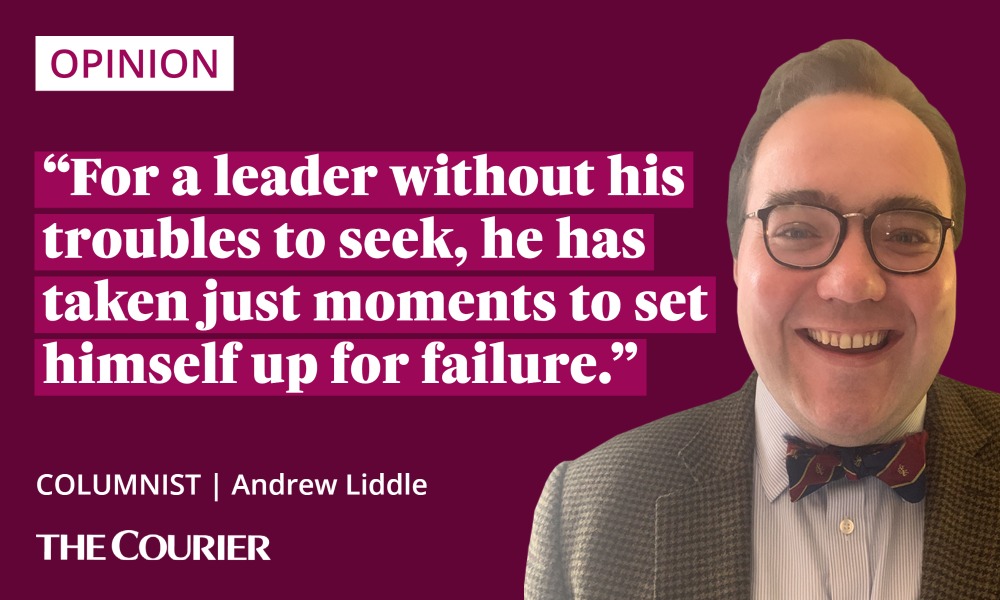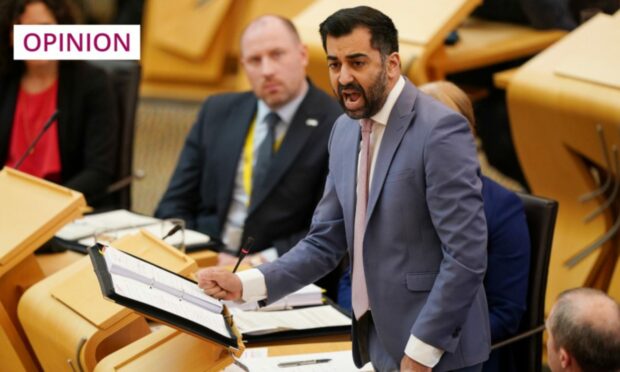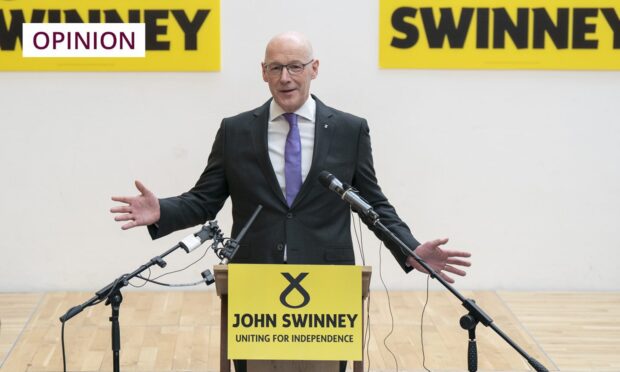The success or failure of political leaders is often defined by their first 100 days in office.
Recognition of this reality emerged with Franklin Delano Roosevelt – better known as FDR – after his victory in the 1932 U.S Presidential Election.
With a thumping mandate (he carried all but six states), a top team – so brilliant it would be nicknamed the Brain Trust – and a clear vision, FDR took his 100 days and created the New Deal era.
Unfortunately for Humza Yousaf, his leadership will be defined not by the first 100 days but the first 100 hours.
For a leader without his troubles to seek, he has taken just moments to set himself up for failure.
The problems began as soon as the result was announced.
As the establishment candidate, Yousaf needed not just to win but to win big to justify the faith that had been put in him by everyone from Nicola Sturgeon down.
Instead, he limped over the line, securing the leadership on second preferences.
He was the first choice of fewer than half of SNP members who bothered to vote – a number that falls to just over a third when you include SNP members who were not inspired enough to cast a ballot at all.
This, then, is about as far as you can get from a thumping mandate.
Yousaf might have survived this setback if he had stayed true to his promise to embrace a big tent by bringing in the other candidates – notably Kate Forbes – who had attracted so much support among the membership.

Instead, he contrived to remove Forbes from office, making a tokenistic offer of the Rural Affairs portfolio that he knew would be rejected.
Forbes – who, incidentally, is more popular among the public than Yousaf – had performed well in one of the top portfolios in the Scottish Government for several years.
To take a demotion would have been an insult, and many of Forbes’ supporters soon followed her in quitting the government.
This is bad politics by Yousaf on several levels.
It has immediately and fundamentally weakened his premiership, creating a powerful cohort of rebels-in-waiting.
As one of FDR’s successors observed, it is always better to have your enemies inside the tent pissing out, than outside the tent pissing in.
Should things start to go wrong for Yousaf – as will happen when the SNP lose the coming by-election in Rutherglen and Hamilton West – he will not have the loyalty and goodwill of his backbenches to rely on. Indeed, rebels among the SNP’s Westminster group in particular may be the first to push for a change in leadership, given their seats are the most immediate in jeopardy.
By picking his cabinet based on loyalty rather than ability, Yousaf has failed to choose a top team and instead determined to continue with the mismanagement and incompetence that came to epitomise the final years of Sturgeon’s reign.
Unfortunately, as Yousaf will know from his own experience, nepotism and talent rarely go hand in hand and, as such, little can be expected from his cabinet and wider administration. This is a government based on little trust and even less brain.
All this, less than 100 hours in, will make it almost impossible for Yousaf to deliver on his vision, vague and nebulous though it was.
Indeed, not only is Yousaf not offering a New Deal, he is actually offering the same deal just in a more incompetent and cack-handed fashion.
His first act – quite literally after stepping off the podium – was to demand a Section 30 order from the UK Government to hold another independence referendum, exactly as his predecessor had done.
Ignoring the dubious authority of this given he wasn’t yet first minister, it was immediately and predictably rejected by Rishi Sunak, just as it was when his predecessor had asked for one.
At the same time, he is apparently determined to push forward with the discredited Gender Recognition Reform Bill, which not only divided his party but deeply damaged the SNP’s reputation with large swathes of the country.
His decision to continue the cooperation agreement with the Scottish Green Party means the ever-increasing prospect of more flawed policies, such as the deposit return scheme, foisted on Scotland’s weary business community.
FDR’s 100 days laid the groundwork for an unprecedented four-term government, lasting for more than a decade and ushering in an era of American prosperity at home and hegemony abroad.
In contrast, it is hard to see how Yousaf’s 100 hours set him up for anything other than a brief and undignified term in office.
When exactly he will be forced out is, of course, impossible to predict, but the next General Election, expected within 18 months, will be a key pinch point.
Either way, Yousaf should make sure he enjoys his first 100 days as, on current form, there certainly won’t be many more of them.











Conversation